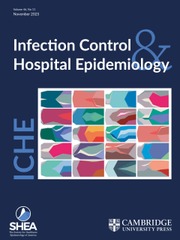Article contents
Improved Perioperative Antibiotic Use and Reduced Surgical Wound Infections Through Use of Computer Decision Analysis
Published online by Cambridge University Press: 21 June 2016
Abstract
A prospective study was performed over a two-year period to determine whether computer-generated reminders of perioperative antibiotic use could improve prescribing habits and reduce postoperative wound infections. During the first year, baseline patterns of antibiotic use and postoperative infection rates were established. During the second year, computer-generated reminders regarding perioperative antibiotic use were placed in the patient's medical record prior to surgery and patterns of antibiotic use and postoperative wound infections monitored.
Hospitalized patients undergoing non-emergency surgery from June to November 1985 (3,263 patients), and from June to November 1986 (3,568) were monitored with respect to indications for perioperative antibiotic use, timing of antibiotic use and postoperative infectious complications. Perioperative antibiotic use was considered advisable for 1,621 (50%) patients in the 1985 sample and for 1,830 (51%) patients in the 1986 sample. Among these patients, antibiotics were given within two hours before the surgical incision in 638 (40%) of the 1985 sample and 1,070 (58%) of the 1986 sample (p<0.001). Overall, postoperative wound infections were detected in 28 (1.8%) of 1,621 patients in 1985 compared with 16 (0.9%) of 1,830 such patients in 1986 (p<0.03).
We conclude that computer-generated reminders of perioperative antibiotic use improved prescribing habits with a concurrent decline in postoperative wound infections.
Information
- Type
- Original Articles
- Information
- Copyright
- Copyright © The Society for Healthcare Epidemiology of America 1989
References
- 45
- Cited by

